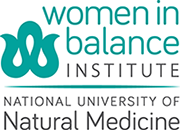 Vitamin D has been all the hype in the last ten years and there has been a multitude of studies done on this particular molecule. We already know that this vitamin is essential for strong bones and healthy immunity, but what about breast health? New information is emerging in the connection of vitamin and the prevention of breast cancer. One particular researcher, Dr. JoEllen Welsh from the Center for Excellence in Cancer Genomics at Albany State University of New York, has paved the path towards breaking research on this subject. Below is just some of the research her team has discovered in the last several years.
Vitamin D has been all the hype in the last ten years and there has been a multitude of studies done on this particular molecule. We already know that this vitamin is essential for strong bones and healthy immunity, but what about breast health? New information is emerging in the connection of vitamin and the prevention of breast cancer. One particular researcher, Dr. JoEllen Welsh from the Center for Excellence in Cancer Genomics at Albany State University of New York, has paved the path towards breaking research on this subject. Below is just some of the research her team has discovered in the last several years.
How does breast tissue use Vitamin D3?
Healthy mature breast cells express multiple vitamin D receptors inside the cell. This receptor will bind to vitamin D3 (25-OH) that is circulating in the blood and use a special enzyme called 1-hydroxylase to convert it to its active form (1,25OH). Once the D is in the active form, it modulates the cell’s genome in several beneficial ways.
DNA Protection
Dr. Welsh and her team did a study where they took normal breast cells and exposed them to DNA damaging chemicals. The cells immediately up-regulated their vitamin D receptors. This suggests the cell is trying to protect itself against DNA damage. Second, they took cells that were null of vitamin D all together and exposed these to DNA damaging chemicals. They compared the results to cells that had physiological doses of vitamin D and they saw the cells without vitamin D expressed far more DNA damage then the cells with the vitamin D. So is adequate vitamin D in our cells protecting them from cellular damage from outside toxins? Research is suggesting it is.
Cell Differentiation
While giving physiological doses of Vitamin D to the normal cell, the growth of the cell slowed significantly. This suggests that vitamin D may help keep mature cells from growing and proliferating, a risk factor for cancer. The research also showed that the cells with higher doses of active vitamin D would spread out more in the tissue, adhere to its surroundings and differentiate. When a cell differentiates completely, the genome expression is highly controlled and it is less likely to grow and proliferate.
Immune Regulation
Regulation and expression of certain immune signaling molecules called ‘cytokines’ were seen in Dr. Welsh’s research. When the normal breast cells were exposed to vitamin D, it up-regulated the expression of the anti-inflammatory marker CD14 by more than 250%. The study also showed increased secretion of IL15 which prompts the proliferation of natural killer T cells. These T cells are immune cells that scan the tissues for abnormal cells and if found, they will be programmed for cell death. Lastly, they saw a reduction in the inflammatory marker IL2. Overall, this piece of research suggests vitamin D may help stimulate the immune system within the breast tissue and protect the tissue from abnormal or cancerous cells.
Enzyme and Transporter Modulation
Vitamin D was shown to regulate metabolic genes in the breast cells. This is an important finding because cancer cells go through what is called a ‘metabolic shift’ which means it increases the metabolism of the cell in order to keep up with the energy needs for proliferation. Vitamin D was shown to regulate this shift by decreasing the amino acid transporters on the surface of the cell. In addition, enzymes that control energy metabolism such as glutamine synthase were also down regulated. This data suggests that vitamin D may help limit the cancerous cell’s ability to proliferate.
Another researcher, Dr. David Feldman, found in his research with mice that vitamin D was down regulating the enzyme aromatase, which is critical for estrogen synthesis in the breast tissue. Aromatase is a key factor in developing the dominant type of breast cancer, estrogen receptor positive. This enzyme takes estrogen precursors in the blood and converts it into estrogen. Estrogen is shown to stimulate cell growth and proliferation.
What is the suggested range for 25-hydroxyvitamin D serum levels to have preventative effects?
The suggested serum levels are between 40ng/ml and 60ng/ml. As of 2004, the NHANES study found that 71% of the US population had subclinical vitamin D deficiency which is defined as 8ng/ml to 24ng/ml.
How to get tested for serum 25-hydroxyvitamin D levels.
The best way to get tested is to ask your doctor to order you a serum test. You can find a doctor near you by going to www.naturopathic.org. You can also get an in home test kit at grassrootshealth.net for a total of $70.00. They also have the option to join their long term study on vitamin D called ‘D Action’. You will then be tested for vitamin D every six months for a period of five years.
Resources
http://www.grassrootshealth.net/media/download/dip_with_numbers_nmol_8-24-12.pdf
Welsh, J. Vitamin D and cancer: integration of cellular biology, molecular mechanisms and animal models. Scand J Clin Lab Invest Suppl. 2012 Apr; 243:103-11
Krishnan AV, Swami S, Feldman D.,The potential therapeutic benefits of vitamin D in the treatment of estrogen receptor positive breast cancer. Steroids. 2012 Sep; 77(11):1107-12
By Haylee Nye NCNM Naturopathic Medicine Program
Edited by Dr Elise Schroeder


